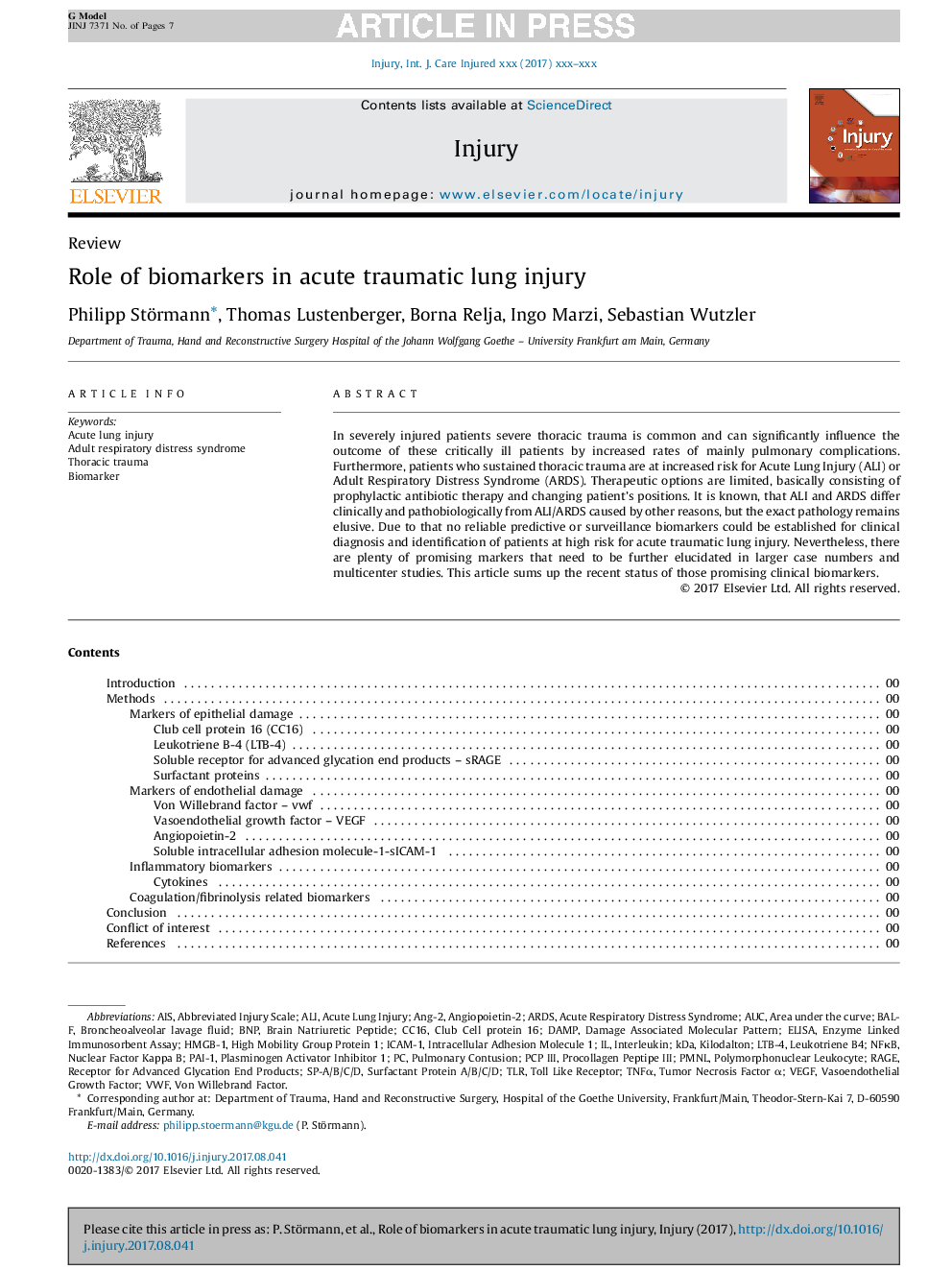| Article ID | Journal | Published Year | Pages | File Type |
|---|---|---|---|---|
| 8718993 | Injury | 2017 | 7 Pages |
Abstract
In severely injured patients severe thoracic trauma is common and can significantly influence the outcome of these critically ill patients by increased rates of mainly pulmonary complications. Furthermore, patients who sustained thoracic trauma are at increased risk for Acute Lung Injury (ALI) or Adult Respiratory Distress Syndrome (ARDS). Therapeutic options are limited, basically consisting of prophylactic antibiotic therapy and changing patient's positions. It is known, that ALI and ARDS differ clinically and pathobiologically from ALI/ARDS caused by other reasons, but the exact pathology remains elusive. Due to that no reliable predictive or surveillance biomarkers could be established for clinical diagnosis and identification of patients at high risk for acute traumatic lung injury. Nevertheless, there are plenty of promising markers that need to be further elucidated in larger case numbers and multicenter studies. This article sums up the recent status of those promising clinical biomarkers.
Keywords
kDaBNPTLRAISangiopoietin-2RAGEvWFkiloDaltonICAM-1DAMPPAI-1ARDSHMGB-1TNFαCC16PMNLAUCNFκBAng-2Acute lung injuryenzyme linked immunosorbent assaydamage associated molecular patternAliinterleukinBiomarkerELISAtoll like receptortumor necrosis factor αadult respiratory distress syndromeAcute respiratory distress syndromeThoracic traumaVon Willebrand factorVascular Endothelial Growth Factor (VEGF)nuclear factor kappa BLeukotriene B4polymorphonuclear leukocyteAbbreviated Injury Scalearea under the curveplasminogen activator inhibitor 1intracellular adhesion molecule 1High Mobility Group Protein 1brain natriuretic peptidePulmonary contusionReceptor for advanced glycation end products
Related Topics
Health Sciences
Medicine and Dentistry
Emergency Medicine
Authors
Philipp Störmann, Thomas Lustenberger, Borna Relja, Ingo Marzi, Sebastian Wutzler,
